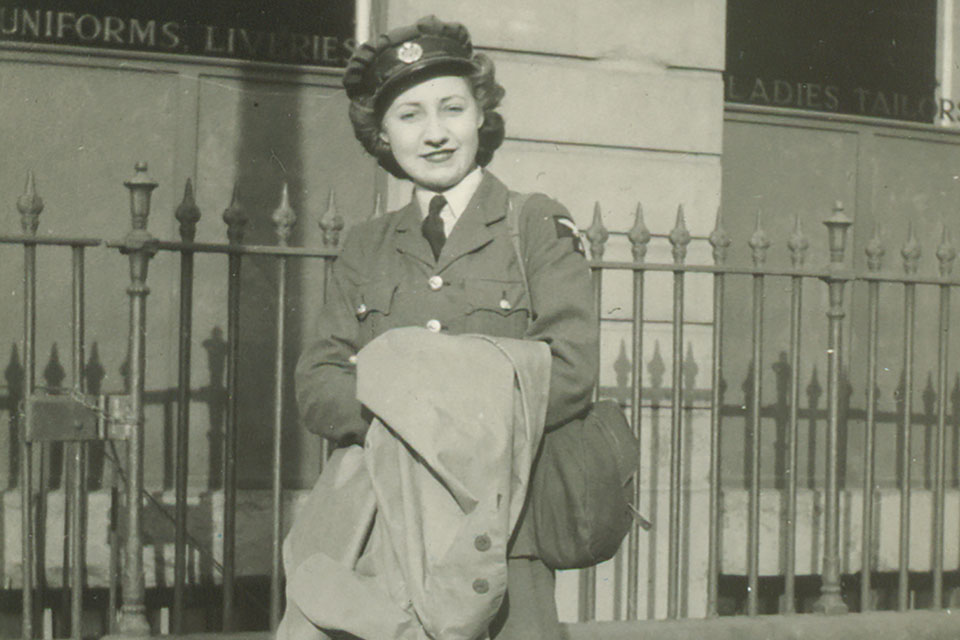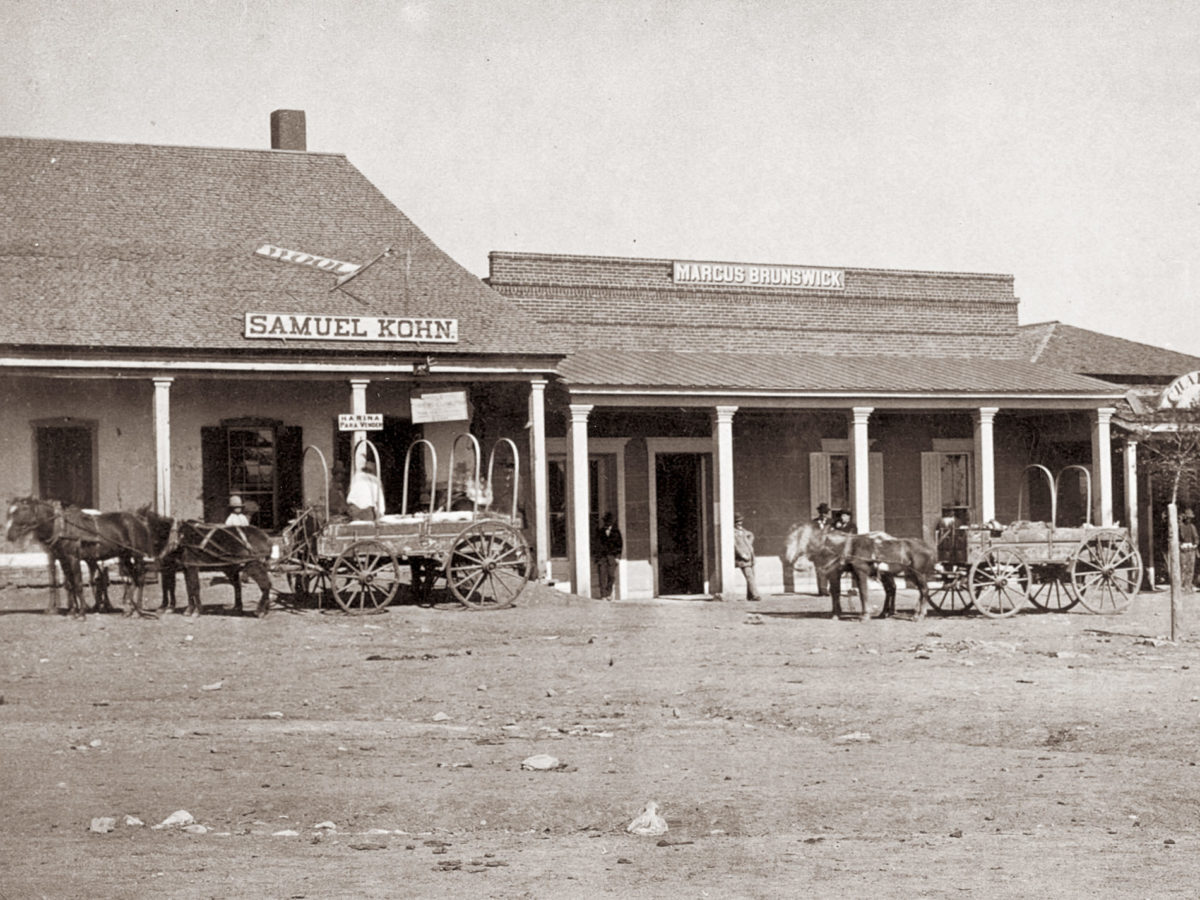Women’s History is more than the sum of its outstanding players: Rosa Parks, Susan B. Anthony, Sacagawea, Helen Keller, Amelia Earhart, et al. These women enjoy a firm place in society’s collective consciousness. As cultural icons, they represent firsts or standouts.
But like other subsets of history, Women’s History is more than just a loose collection of headlines about the intermittent monarch, the suffrage movement, the occasional outstanding writer, the trailblazing aviatrix, the pious religious figure, the angry form of feminism that led women to set their underthings ablaze.
In those headlines we do find extraordinary people who just happen to be women, and these models of the extraordinary serve as inspiration for current and future generations—for both women and men. A few notables: Lady of the House Congresswoman Jeanette Rankin, who was elected to Congress in 1916, four years before the 19th Amendment gave women the right to vote; the African-American contralto Marian Anderson, whose fans included Presidents Franklin Roosevelt and Dwight Eisenhower even though she was often not allowed to sing for white audiences; Corazon Aquino, the president of the Philippines who survived six coup attempts and almost made us forget Imelda Marcos’ shoe addiction; and Coco Chanel, the once-impoverished child of France, whose little black dress endures and whose legacy is bottled in pretty, one-ounce containers.
These woman and others like them did not just prevail, they excelled when personal, economic, political, and racial obstacles threatened. If you’ll stroll down Cliché Lane for a bit, the cards were stacked against these women, but they bet the farm and won. Everyone can relate to that—and to their stories.
Their stories are full of adventure, romance, loss, and triumph. Witness Heloise writing letters from a medieval convent to the castrated father of her child in 12th century France. Marvel at Isabelle Eberhardt’s stark detailing of her solo Saharan explorations in the early 1900s. Clap along to Babe Didrikson collecting two gold medals in track and field in the 1932 Olympics before swinging her way to victory in the LPGA. It’s not an accident that five-sevenths of the word “history” is “story,” or that both words derive from the same Latin root word.
But apart from the occasional matriarchal monarch or martyr or missing aviatrix, the history of women is often a secondary history of serving tea at document-signings, caring for men wounded in battle, and standing off to the side at men’s election victories. But in the tea-serving and the wounded-tending, in the shadows of the spotlight lie the stories that we mere humans of both genders can most easily relate to.
While we can certainly agree that specific documents and battles and elections do alter the course of history, we the pedestrians are rarely the stars of these monumental events. We are the extras in a cast of thousands, more footnotes than headlines, to mix metaphors.
In that sense, the majority of women’s history is closer to us, male and female, than any other kind of history. Let’s face it, as amazing as we humans think we are, the truth is we’re more apt to serve tea than sign treaties. Women’s history, like other subsets of history (ethnic history, art history, social history, cultural history, archeology, etc.) is mostly about the other 99.9% of things that are going on outside of the treaties, battles, and elections. By studying these subsets, we benefit from a richer perspective on what is generally considered regular history.
Case in point: Judith Bennett’s book, A Medieval Life: Cecelia Penifader of Brigstock, c.1295–1344, illustrates the life of one of the 99.9% and presents women’s history as everyperson’s history. Bennett, a medieval historian, draws upon court rolls and manorial documents to piece together a picture of a peasant’s life in early 14th century England. This peasant just happens to be a woman. From Bennett’s book we learn about aggressive farming techniques, the Black Death, medieval communities, the labor market, and how the court system worked.
We also learn about history on the micro level, with Cecelia as the representative peasant. She owned land, attended church, served as head of her household, and bought and sold goods and land. Cecelia’s history turns into a woman’s history only when we realize she never married. Because of her spinster status, Cecelia was the sole owner of her land, could will it to whomever she wanted, and made business decisions regarding her property and her farm without having to consult anyone or worrying about heirs—all radical but historically accurate concepts. And all about girl power, however unintentional.
Other radical but historically accurate concepts include girls receiving education, women earning the right to vote and own property, women playing sports, women serving as heads of state, women making important scientific discoveries, women taking to the skies, and eventually, women outnumbering men in college. Radical concepts inspired by radical women like Elizabeth Cady Stanton, Benazir Bhutto, Madame Curie, and Beryl Markham should be celebrated because they were firsts or were important to society or both. They should be recognized not just within the sub-category of women’s history but as part of all of history, threads that altered the pattern of history for everyone.
By studying the Cecelia Penifaders, we can glean more about what life was like for the common folk in any historical period. Let’s face it, unless you’re Bill Gates or Barack Obama or even Hilary Clinton, you are the common folk of the early 21st century. You are Cecelia Penifader, 700 years later.
women’s history month
The UK, Canada, US and Australia celebrate Women’s History every March. The month is used to reflect on the many different roles women have taken throughout history. It began under Jimmy Carter as Women’s History Week and later expanded to the entire month.
- Read more about Women’s History Month
History, good history, the kind with gripping stories and messy morals and surprising twists, is more than just a highlight reel with pink (or blue) graphics. History is also the rest of the movie, and of course, the credits.
Famous women in modern history
Joan of Arc
Joan of Arc has become a world famous icon from 1412 France. While living she was instrumental in the Hundred Years War and after she passed she became a Saint in 1920. Read more about Joan Of Arc.
Queen Isabella
Queen Isabella and her husband, King Ferdinand II of Aragon, unified Spain through their joint rule of Castile and Aragon. Together, they brought many improvements to Spain, including reducing crime and debt. Read more about Queen Isabella.
Queen Elizabeth I (1533–1603)
Queen of England. Elizabeth I was the last of the Tudor monarchs. Despite a tumultuous rise to the throne, she reined England with considerable diplomacy and brought a period of peace and enlightenment to England. Read more about Queen Elizabeth I
Pocahontas (1595–1617)
Native American. Pocahontas was a Native American princess of the Powhatan tribe. She is believed to have saved the life of the leader of the Jamestown colony, Captain John Smith. This act and her marriage to a Jamestown colonist helped establish peace between the Natives and the colonists, aiding in the survival of the colony. Read more about Pocahontas
Queen Anne (1665–1714)
Queen Anne was the last Stuart Monarch of Britain. Read more about Queen Anne
Catherine The Great
Catherine the Great was the Empress of Russia, and during her reign, she expanded Russian boundaries considerably and promoted education and Enlightenment, while continuing to promote nobility and reduce the rights of serfs. . Read more about Catherine The Great.
Abigail Adams
Abigail Adams was the wife of John Adams, the second president of the United States of America. During her husband’s travels the pair kept in contact through letters which has shed much light on their time and relationship. Read more about Abigail Adams.
Sacagawea
Guide and Interpreter (1788-1812) Sacagawea was a Lemhi Shoshone Native American woman. She travelled with Lewis and Clark helping them as both a guide and an interpreter. Read more about Sacagawea
Harriet Beecher Stowe (1811–1896)
Author of “Uncle Tom’s Cabin,” which brought attention to the horrors of slavery. Read more about Harriet Beecher Stowe.
Queen Victoria (1819–1901)
Queen Victoria was Britain’s longest ruling monarch and reigned over what is now known as the Victorian era. Read more about Queen Victoria
Elizabeth Cady Stanton (1815–1902)
Pioneer of women’s rights movement. Read more about Elizabeth Cady Stanton.
Susan B. Anthony (1820–1906)
Established the National Woman’s Suffrage Association, and early leader of the women’s suffrage movement. Learn more about Susan B. Anthony.
Florence Nightingale (1820–1910)
An English nurse, considered a pioneering in modern nursing. Learn more about Florence Nightingale
Harriet Tubman (1820–1913)
Born a slave, Tubman was the most famous member of the underground railroad. Learn more about Harriet Tubman.
Clara Barton (1821–1912)
The most famous civil war nurse, Clara Barton later founded the American Red Cross. Learn more about Clara Barton.
Emily Dickinson
Emily Dickinson wrote close to 2,000 poems during her lifetime, the majority of which were not published until after her death. Her poems were often poignant and many centered around the mysteries of death. Read more about Emily Dickinson.
Louisa May Alcott (1832–1888)
Author of “Little Women” and “Little Men,” Alcott also served as a civil war nurse and was an activist for women’s suffrage. Learn more about Louisa May Alcott.
Annie Oakley (1860–1926)
Oakley was a famous woman sharpshooter and star of Buffalo Bill’s Wild West Show. Learn more about Annie Oakley
Marie Curie
Marie Curie was a famous chemist and physicist who held many achievements for women. She won the Nobel Prize twice and as influential in the world of chemistry. Read more about Marie Curie.
Gail Laughlin (1868–1952)
Attorney and prominent women’s rights activist
Helen Keller
Helen Keller became blind and deaf at the age of two as a result of a severe illness. She overcame her handicaps to earn a college education, and she spent her life championing for the rights of those with physical handicaps. Read more about Helen Keller.
Eleanor Roosevelt (1884–1962)
Wife of President Franklin Roosevelt, Eleanor was a prominent figure during WWII, a skilled writer, politician, and activist. She served as the Chairperson of the United Nations Human Rights Commission. Read more about Eleanor Roosevelt
Georgia O’Keeffe
Georgia O’Keefe was a painter who received great recognition for her paintings of flowers and landscapes, including barren desert scenes. She received many prominent honors during her lifetime, including the Medal of Freedom. Read more about Georgia O’keeffe.
Amelia Earhart (1897–1937?)
First woman to fly solo across the Atlantic Ocean. She disappeared while trying to circumnavigate the world. Read more about Amelia Earhart
Margaret Chase Smith (1897–1995)
Smith was the first woman to serve in the U.S. Congress, both in the House of Representatives and Senate.
Margaret Mead
Margaret Mead was the author of Growing up in New Guinea, Male and Female and Coming of Age in Samoa. She is known for illuminating the concept that personality differences is more of a cultural conditioning than an inherited trait. Read more about Margaret Mead.
Mother Teresa
Mother Teresa is a world iconic woman who performed many charitable acts. Her marks on international charity and helping starving children and children that were victims of conflict are well-known. Read more about Mother Teresa.
Rosa Parks (1913–2005)
Rosa Parks was an American civil rights leader. Known as “The First Lady of Civil Rights” she is best known for refusing to give up her seat on a bus to a white man in Montgomery, Alabama. Read more about Rosa Parks
Mildred Ella “Babe” Didrikson Zaharias (1914–1956)
Zaharias won two gold medal in the 1932 Summer Olympics in track and field. Afterward, she became a professional golfer, and won the US Open three times.
Margaret Thatcher (1925–2013)
Margaret Thatcher was the first woman Prime Minister of Britain. Leading the conservative party, she is known as “The Iron Lady.” Read more about Margaret Thatcher
Anne Frank (1929–1945)
Author of “Anne Frank’s Diary” about her experience in a Nazi Concentration Camp. Learn more about Anne Frank
Sandra Day O’Connor
Sandra Day O’Connor went to Stanford Law School and graduated with her degree in law. She was the first woman to hold the title First Majority Leader of the senate. Read more about Sandra Day O’ Connor.
Jane Goodall
Jane Goodall is a conservationist, animal welfare activist and expert on primates, particularly chimpanzees. Her studies and findings in the world of primates have been studied in many institutes. Read more about Jane Goodall.
Gloria Steinem
Gloria Steinem is a journalist and author of several books who is best known for her lifelong endeavor of achieving equality for women in the workplace, in politics, and in all other societal aspects. Read more about Gloria Steinem.
Barbara Jordan (1936–1996)
First African American from a southern state to serve in the US House of Representatives, first African American to serve a keynote speaker at the Democratic National Convention
Madeleine Albright (1937–)
First woman to be appointed U.S. Secretary of State.
Hillary Rodham Clinton
Hillary Clinton was the 67th US Secretary of State. She is married to former U.S. President Bill Clinton and is very notable for her manner in handling scandal occurring during her husband’s presidency. Read more about Hillary Rodham Clinton.
Oprah Winfrey
Oprah Winfrey is an American celebrity and icon. She started with a career in journalism, created her own talk show that has won numerous awards and currently has her own syndicated network. Read more about Oprah Winfrey.




